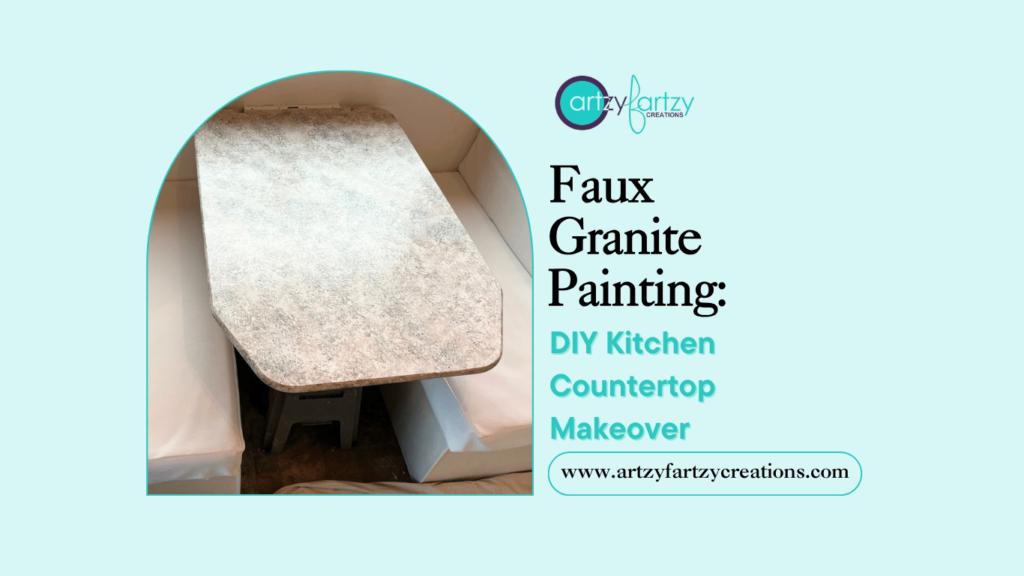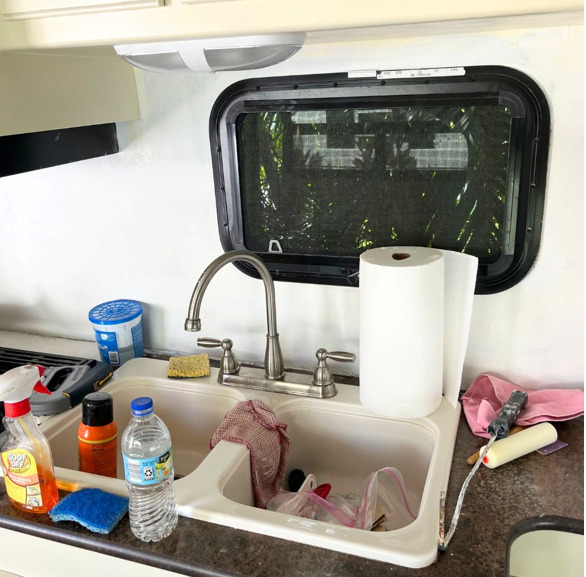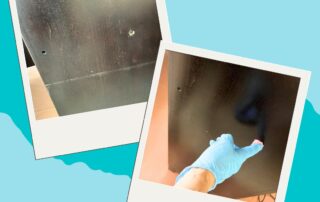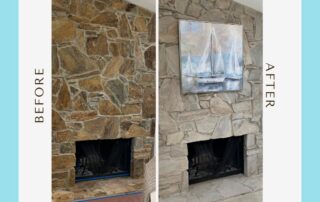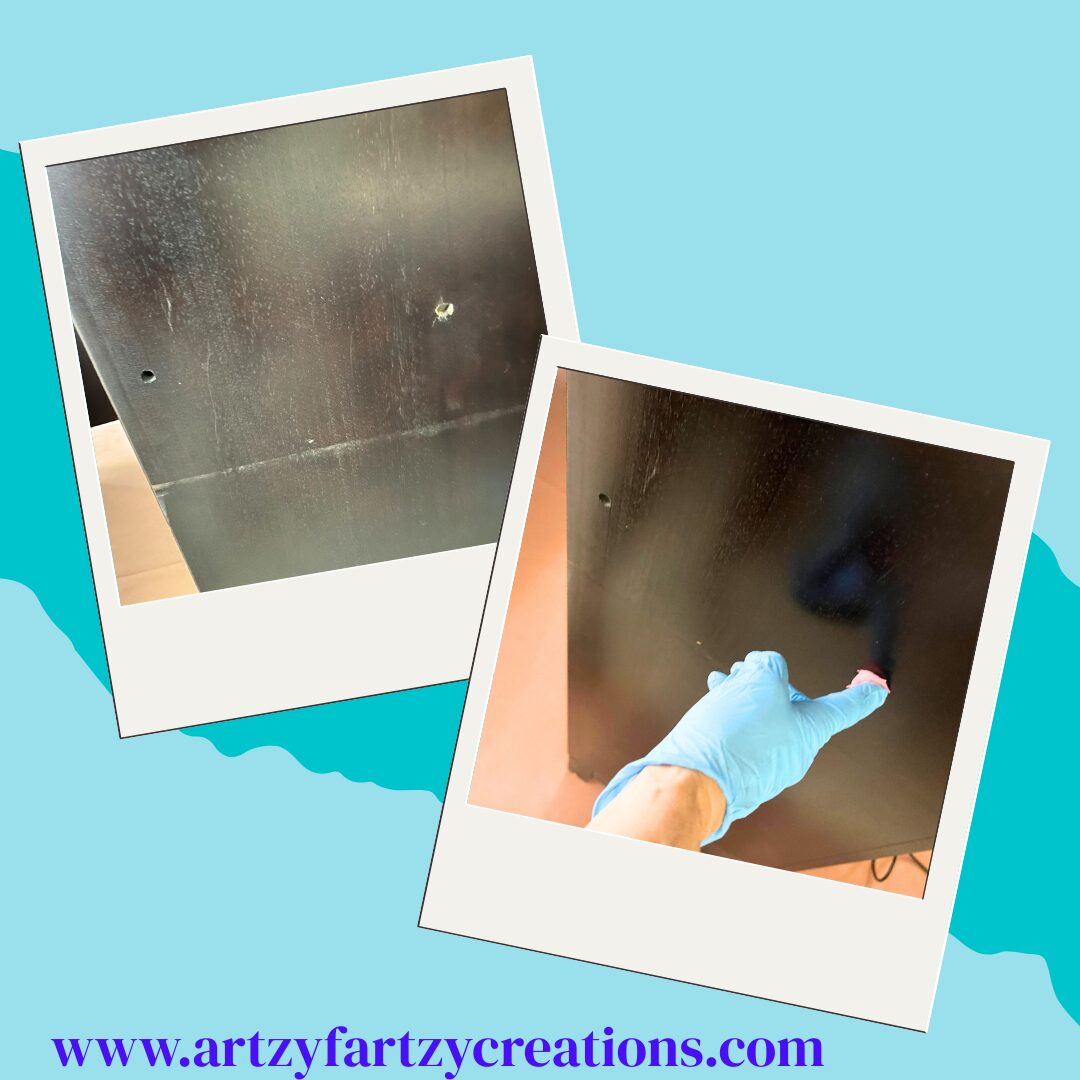Introduction to Faux Granite Painting
Faux granite painting offers a cost-effective solution for updating your countertops, especially when compared to the expense of installing real granite. Real granite countertops can be quite pricey, factoring in both material costs and professional installation. In contrast, faux granite painting provides an affordable option that allows you to achieve a similar aesthetic without straining your budget. The beauty of faux granite painting lies in its customization potential. It opens up a world of design possibilities, breaking free from the natural patterns of real granite. This means you have the creative freedom to select colors and patterns that perfectly match your kitchen’s style, adding a personal touch that reflects your unique taste and personality. Whether you have a specific color scheme or theme in your kitchen, faux granite painting can be tailored to seamlessly integrate with your existing decor.
Excuse the mess, I should have cleaned it up before I took this picture. LOL!
Advantages of Faux Granite Painting
The best part? You can enjoy these benefits without the need for a full-scale renovation, as faux granite painting involves minimal disruption. Unlike extensive kitchen overhauls that entail tearing out existing countertops and enduring extended construction, this method is a quicker project that you can complete over a weekend or a few days, allowing you to relish your newly upgraded kitchen sooner. It’s a practical choice for those looking to refresh their kitchen’s appearance without the hassle of a full renovation.
Step-by-Step Guide to Faux Granite Painting
OK, are you ready? Let me walk you through the steps.
Step 1: Surface Preparation
Clean the surface with TSP. You want to make sure you clean all the grim and grease before you start.
Step 2: Sanding
Sand the entire surface (Really Good) with a medium grit sandpaper.
Step 3: Second TSP cleaning
Clean again with TSP.
Step 4: Surface Taping
Tape off around the sink, stove, walls, etc. and anywhere you don’t want paint.
Step 5: Priming
Prime the entire area 2x. Let each step dry before moving forward. My favorite primer is Stix Primer, it’s very durable.
Step 6: Paint and Glaze Preparation
You can use any latex-type paint. To make your glaze. Home Depot has sample sizes so you don’t have to buy more than what you need.
Mix 2 parts glaze to one part paint.
I use paper plates to separate each color. NOTE: You can use up to 6 different colors, but I wouldn’t go over that, it starts to look too busy.
Then take your sea sponge and break off small workable pieces. One for each color.
Step 7: Sea Sponge Application
Wet your sea sponge and wring out the water. Then lightly dab the sea sponge into the paint. I like to start with the lightest color first.
Step 8: Diagonal Paint Application
Working in a diagonal direction apply the paint to the surface. Cover the entire area before moving on to the next color.
Step 9: Gradual Color Addition
Following the same directions as above take your next color and start lightly dabbing the next darker color in the same diagonal direction next to the first color.
Continue with the rest of the colors filling in the base color. If you have heavier areas or spots you don’t like just go over it with the color of choice until you are satisfied.
Step 10: Polyacrylic Clear Coat Application
Once you’re satisfied with the way it looks, you’ll want to add a polyacrylic clear coat to protect it. I like to add 4-5 coats especially if the table is going to get used a lot.
Here’s another one of my favorite painted finishes you might like as well.
Here’s your supply list:
- Primer
- Brush
- Sponge roller & sleeve
- Sandpaper
- Rags
- Clear coat
- 4-6 different colors of latex Paint: Any left over Latex paint
- Glaze
- Sea sponge
- Gloves
- Paper plates: any paper plate
- Blue tape
- Utility knife
- TSP
- My favorite painted finish
P.S. Have you ever thought about turning your hobby into a business? Join Empowering Women.
P.S.S. Get my blog jam-packed with home decorating and DIY tips:
XOXO
Cheryl
Artzy Fartzy Creations. Oh Yes you can DIY!
DIY Metallic Molding Technique: Add Old-World Charm to Your Home
Looking to add a little extra drama and [...]
How to Repair Holes in Wooden Furniture – Fast, Easy, and Budget-Friendly!
hand applying wood filler to a hole in a [...]
How To Paint A Brick Fireplace In One Easy Step
Is your outdated brick fireplace dragging down your room? If [...]
DIY Magic: Create a Raised Cherry Blossom Stencil Design with Glitter That Pops!
Raised cherry blossom stencil with glitter on a painted [...]
How to Repurpose Old Furniture Into a Cozy Dog Bed
DIY Small Dog Bed Tutorial -How to Make [...]
Master- How To Paint Perfect Horizontal Stripes Like a Pro
Want to know my secret pro tip to paint horizontal [...]
Contents
Recent Reads
How to Repair Holes in Wooden Furniture – Fast, Easy, and Budget-Friendly!
hand applying wood filler to a hole in a [...]
How To Paint A Brick Fireplace In One Easy Step
Is your outdated brick fireplace dragging down your room? If [...]
DIY Magic: Create a Raised Cherry Blossom Stencil Design with Glitter That Pops!
Raised cherry blossom stencil with glitter on a painted [...]

